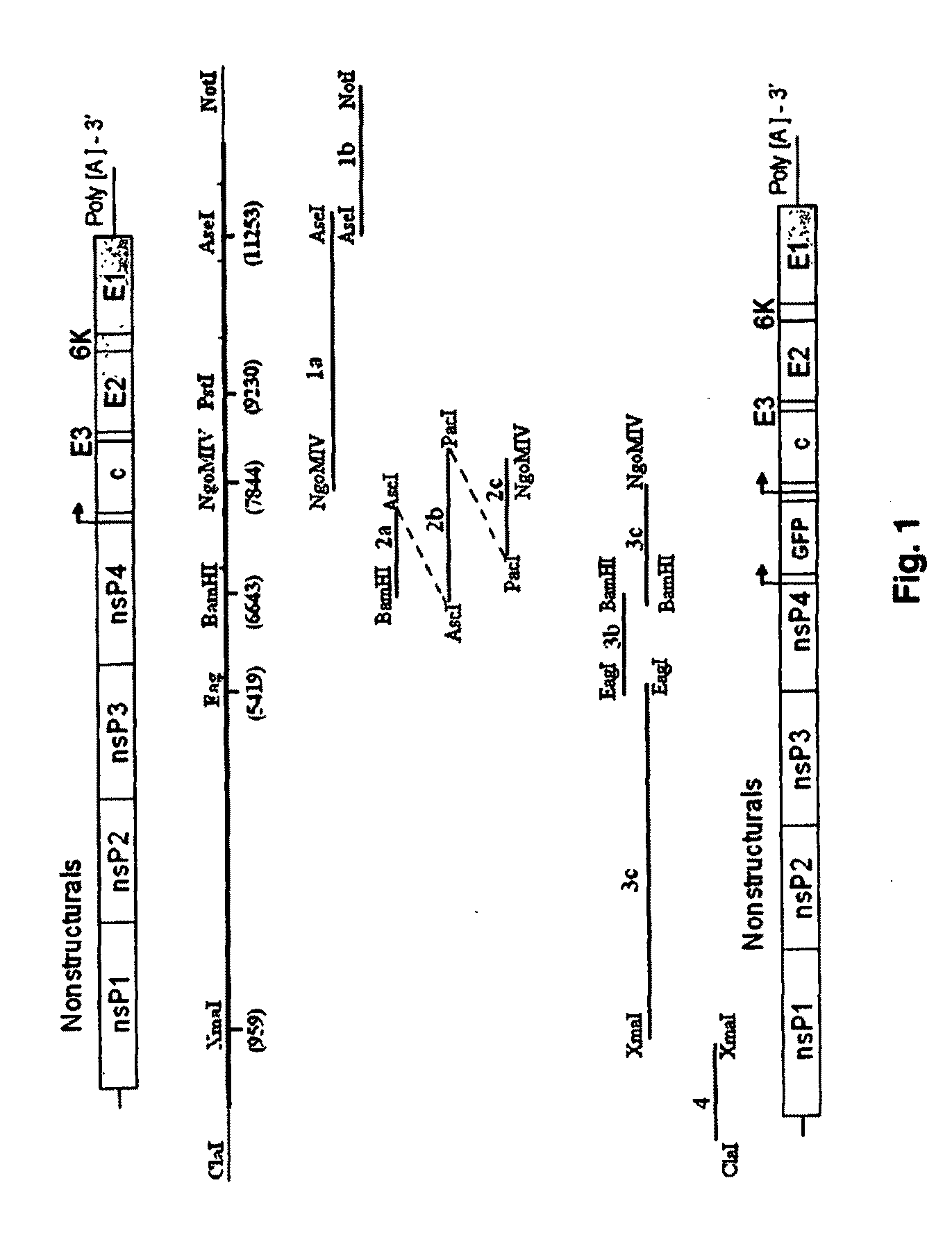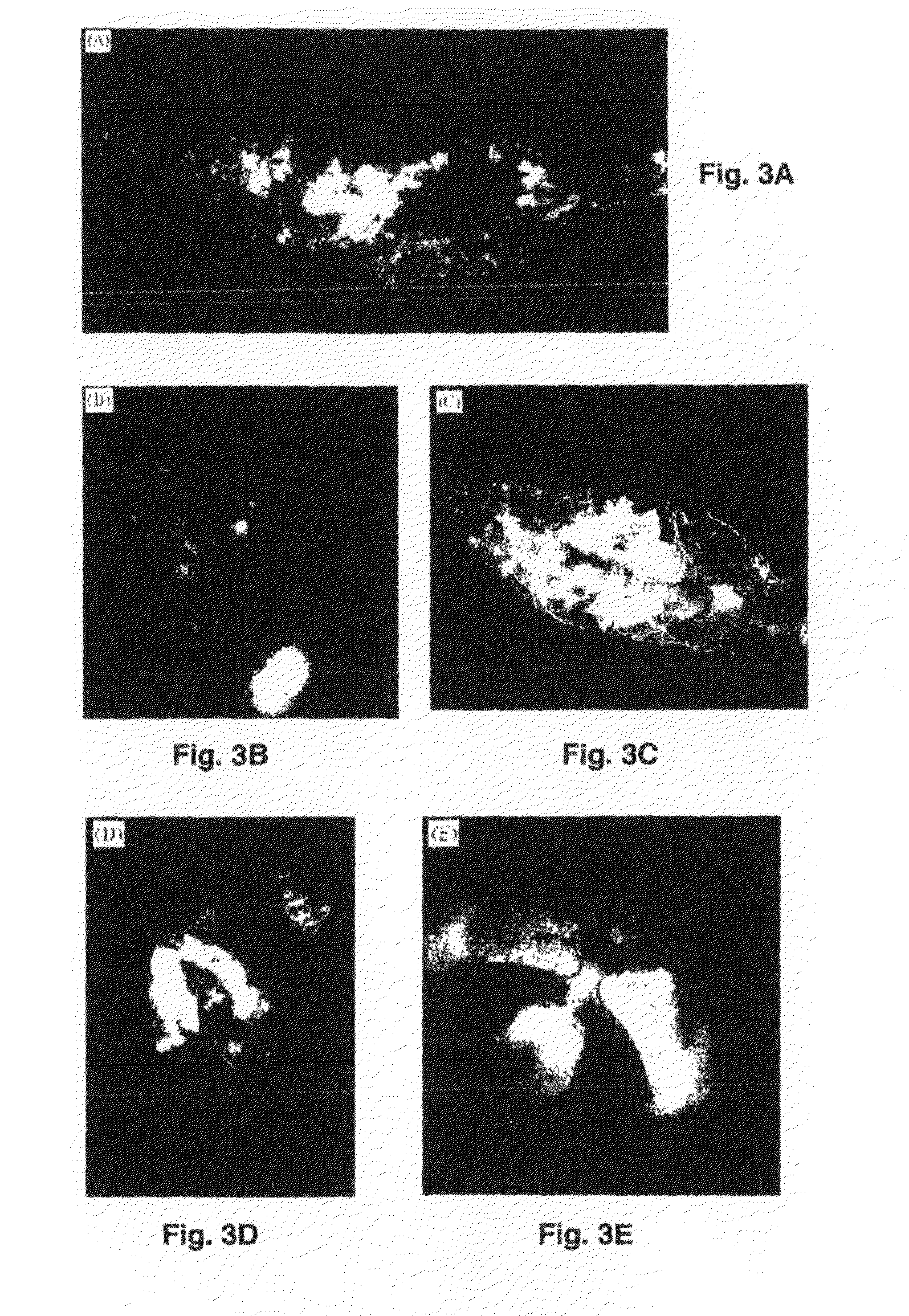Chikungunya virus infectious clones and uses therefor
a technology of chikungunya virus and clone, which is applied in the field of molecular biology, virology and immunology, can solve the problems of low efficiency with which the original system infects and disseminates from the midgut following oral infection, and the oral infectivity and dissemination rate of the dssin expression system are often too low for use with genes
- Summary
- Abstract
- Description
- Claims
- Application Information
AI Technical Summary
Benefits of technology
Problems solved by technology
Method used
Image
Examples
example 1
Viruses
[0106]The 37997 strain of CHIKV was obtained from the World Reference Center for Arboviruses at the University of Texas Medical Branch, Galveston, Tex. CHIKV was originally isolated from Ae furcifer mosquitoes from Kadougou, Senegal in 1983 and was passed once in Ae. pseudoscutellaris (AP-61) cells and twice in Vero (green monkey kidney) cells. Stock virus was produced following a single passage in Vero cells, grown at 37° C. in Leibovitz L-15 media with 10% fetal bovine serum (FBS), 100 U penicillin, and 100 g / mL streptomycin. Virus was harvested when cells showed 75% cytopathic effect (CPE) and aliquoted and stored at −80° C. for use in all experiments.
example 2
RNA Extraction
[0107]RNA was generated using C6 / 36 cells that were inoculated with the CHIKV (37997). Virus was harvested from cell culture supernatant using the QIAamp Viral RNA Mini kit (Qiagen, Valencia, Calif.) following the manufacturer's protocol. RNA was stored at −80° C. for later use.
example 3
Reverse Transcription and Sequencing
[0108]CHIKV (37997) RNA was reverse transcribed to produce cDNA using random hexanucleotide primers (Promega, Madison, Wis.) and Superscript II (Invitrogen Life Technologies) following manufactures instructions. cDNA was amplified with Taq DNA polymerase (New England BioLabs, Beverly, Mass.) with 35 cycles at 94° C., 20 sec; 55° C., 20 sec; 72° C., 2 min; final extension at 70° C. for 5 min. Amplified PCR products were analyzed by electrophoreses on 1% agarose gel and gel-purified using the QIAquick Gel Extraction Kit (Qiagen). The purified PCR products were used for direct sequencing.
PUM
 Login to View More
Login to View More Abstract
Description
Claims
Application Information
 Login to View More
Login to View More - R&D
- Intellectual Property
- Life Sciences
- Materials
- Tech Scout
- Unparalleled Data Quality
- Higher Quality Content
- 60% Fewer Hallucinations
Browse by: Latest US Patents, China's latest patents, Technical Efficacy Thesaurus, Application Domain, Technology Topic, Popular Technical Reports.
© 2025 PatSnap. All rights reserved.Legal|Privacy policy|Modern Slavery Act Transparency Statement|Sitemap|About US| Contact US: help@patsnap.com



